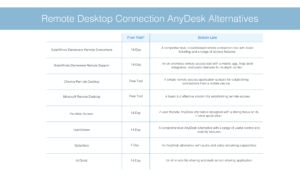

That’s exactly what remote monitoring does. By helping improve the time to resolution, it can decrease the possible impact on the end user and reduce the amount of productivity that will be lost as a result of the device issue. In a time when working conditions are shifting and more and more people are working remotely, the value of being able to know as soon as a Windows device is down-and having insight into the possible causes of the issue-is incredibly valuable. They rarely, if ever, have the time to monitor the status of the many devices on their network 24/7. IT teams, no matter their size, have a limited number of hours and amount of bandwidth available for tackling the many tasks that make up their jobs. This allows you to solve issues immediately, without needing to address the problem yourself. Some even offer automation capabilities that let you automatically run scripts on remote devices whenever the tool’s remote monitoring feature detects a specific issue. RMM tools also typically let you engage in remote access, so you can control remote devices directly and resolve issues without having to use an intermediary method or be on the problematic device yourself. You can even use your insight to make proactive efforts to improve potential problems before they impact end users and performance. They’ll also let you see your alert history, so you can see whether the issue is new or if it has developed over time, letting you see trends in performance and make more targeted intervention efforts to address the root cause of larger issues. The best tools will alert you when any of the monitored metrics require attention or when specific events occur. IT teams can then access this collected data for real-time performance data for workstations, endpoints, and networks.

Remote monitoring software typically lets you keep track of metrics essential to the performance of your devices and larger infrastructure. Remote monitoring is typically discussed in coordination with remote management, since the two tend to go hand in hand. It involves collecting information on key metrics on remote devices used for everything from patch management and script execution to general device management. Remote monitoring is the process of keeping track of the devices on your network from a distance, without physically accessing those devices.


 0 kommentar(er)
0 kommentar(er)
